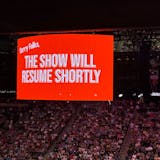A no-hit bid in Major League Baseball, as recently as a decade ago, was a "drop what you're doing" occasion for fans — and the completion of a no-hitter was major news.
These days, the former is still somewhat true, particularly as social media speeds news of such a thing to more people. The latter? No-hitters register a ripple on the surprise meter instead of a spike.
The simplest reason: No-hitters seem to happen a lot more often, and in reality they ARE happening more often. Jake Arrieta's no-hitter for the Cubs on Sunday was the sixth one this season, all since June. We're on an every-other-week schedule with no-hitters over the past few months, turning them from exceptional acts into relatively routine occurrences.
There have already been 30 no-hitters from 2010-present after there were only 15 in the entire previous decade. Historically, there is an ebb and flow — there were 31 in the 1990s but just 13 in the 1980s — but we are at an unusually high peak right now.
The 1960s offer the only real comparison to this decade in terms of no-hitter frequency, with 34 no-hitters in about two-thirds the number of games played per year as there are now (putting that decade on pace for about five per season, just like the 2010s, if equal numbers of games were played).
The 1960s brought a dramatic change when the mound was lowered after the 1968 season because pitchers were so dominant. The 2010s are a similarly dominant era for pitchers, brought about by different factors:
• The end of the Steroid Era, generally agreed to have happened around the late 2000s, brought offensive numbers down.
• Pitchers are throwing harder. Thanks to PITCHf/x data, we know that the average MLB fastball increased from roughly 90 mph to 92 mph from 2002 to 2013.



